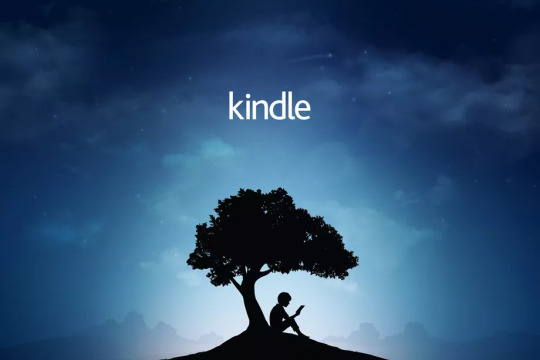Don't wanna be here? Send us removal request.
Text
Social Media, its Affordances and my Daily Life.
The presence of Social media in today’s society is as prevalent as it has ever been, almost making it necessity to everyday life. Social media enables us to socially interact online by sharing and receiving content from anyone we want, whether through the medium of blogs, pictures, videos and written statements social media allows us to create, communicate and visually express ourselves. Michael Dewing’s Social media: An Introduction “the characteristic of accessibility is also important: social media can be used anywhere, at any time, where an internet connection is available”. (Dewing, 2012).

(Image: <https://www.businesswest.co.uk/blog/social-media-business-2018>)
Social media provides us with multiple platforms for creative self-expression. Instagram allows us to share pictures of our daily lives with our followers such as an ‘Instagram worthy’ cappuccino or creative clothing style. This constant connection with others allows us to portray our daily lives, keeping loved ones and new friendships formed over social media up to date with our personal lives. Furthermore, social media users ultimately control their narrative and information that they chose to share with others, The BBC reported that “In fact, it has become so much a part of people's lives that you can learn someone's life story just by checking their page. Their friends, likes and dislikes, relationship status, phone number, address…everything.” (Social networking - good or bad?, 2013)
Most importantly social media utilizes its platforms to create a space for unity in times of tragedy, the use of hashtags to explore specific content was crucial to communicating news and express our concern for the Australian Bush fires of 2020. Informing the mass audience on social media of how they can help while Australia was in crisis, mainly through donations to charities to help those affected.

(Image: https://twitter.com/Garreth_Wigg )
These affordances are so beneficiary to us as a society that 3.81 billion people are on some form of social media. Yet, with these affordances, there are considerable negative and even dangerous aspects to social media we must consider. The dark side to social media includes the risks of trolling/cyberbullying, data storage and false identity (catfishing). These risks don’t necessarily have to negatively affect our social media experience if you use these platforms with an awareness of the knowledge and tools to prevent this. However, the constraints social media has on our daily lives slips past us as we engage in these platforms. Addiction to social media is becoming one for the most common effects of our daily lives. Daria J. Kuss and Mark D. Griffiths’ Online Social Networking and Addiction—A Review of the Psychological Literature states “The mass appeal of social networks on the Internet could potentially be a cause for concern, particularly when attending to the gradually increasing amounts of time people spend online” (Kuss and Griffiths, 2011). Through this, we must be mindful of the addictive qualities that keep us drawn to our phones such as social validation, fear of missing out and acknowledging how social media monitors what we do , adapting its content to match our interests, which make it difficult to draw away from our phones. If we are mindful, we can prevent risks of addiction and damages to our mental health.
References:
- Business West, 2018. Social Media. [image] Available at: <https://www.businesswest.co.uk/blog/social-media-business-2018> [Accessed 13 March 2021].
- Dewing, M., 2012. Social media: An Introduction. Library of Parliament, [online] (2010-03-E), p.2. Available at: <https://bdp.parl.ca/staticfiles/PublicWebsite/Home/ResearchPublications/InBriefs/PDF/2010-03-e.pdf> [Accessed 12 March 2021].
- Kuss, D. and Griffiths, M., 2011. Online Social Networking and Addiction—A Review of the Psychological Literature. International Journal of Environmental Research and Public Health, [online] 8(9), pp.3528-3552. Available at: <https://pubmed.ncbi.nlm.nih.gov/22016701/> [Accessed 14 March 2021].
- School Report. 2013. Social networking - good or bad?. [online] Available at: <https://www.bbc.co.uk/schoolreport/22065333> [Accessed 12 March 2021].
- Twitter, 2020. #australiaburning. [image] Available at: <https://twitter.com/Garreth_Wigg/status/1213362868873154560?ref_src=twsrc%5Etfw%7Ctwcamp%5Etweetembed%7Ctwterm%5E1213362868873154560%7Ctwgr%5E%7Ctwcon%5Es1_&ref_url=https%3A%2F%2Fwww.9news.com.au%2Fnational%2Fsocial-media-response-victoria-new-south-wales-bushfires%2Fd5dd5e41-f8a7-4776-9366-8ecc74b77c79> [Accessed 15 March 2021].
0 notes
Text
Social Media and the Future of Communication.
In a world with multiple varieties of social media platforms such as Instagram, Twitter, Tic Tok and Facebook, businesses are adapting their marketing strategies, using social media as an essential part of their business development. Apel et al states in The future of social media in marketing: “Social media allows people to freely interact with others and offers multiple ways for marketers to reach and engage with consumers.” (Appel, Grewal, Hadi and T. Stephen, 2020)

(Image: <https://www.tiktok.com/@ryanair?lang=en>)
Popular airlines such as Ryanair have adapted their marketing strategies to engage with the social media population, creating visual, entertaining content to promote the airline. This is an insight to how businesses will evolve their communications through social media, Linda Pophal’s How Marketers Will Use Video in 2021 states: “Video continues to be a popular and effective way to boost marketing efforts, especially with the emergence of video-first platforms such as TikTok. […]. Today, marketers of all types and sizes--even those with very small budgets--can successfully use video to augment their marketing communication efforts” (Pophal, 2021). Ryanair even adopted their language to fit meme culture, appealing to younger audiences who are more likely to travel on low budget airlines.
Furthermore, the major shift in the way we communicate has been grossly affected by the outbreak of Covid-19. But most importantly, social media is evolving into to a marketing, customer friendly resource for consumers. In the past year we have depended greatly on shopping online. Window shopping and exposure to advertisements on the high street were put on hold. Leaving businesses to heavily rely on their websites and social media presence to promote their brand.
This was achieved through social network marketing. From the noticeable development in the communication pathways of social media, the future of businesses both corporate and independent will utilise social media to communicate with a worldwide audience and promote their brand.

(Image: : <https://www.instagram.com/tahira_makeup/> )
One of the most recently growing strategies to increase business profits is through Influencer marketing. Popularised as a way of collaborating with users who have thousands, even millions of followers or celebrities with a wide fan base, businesses pay these influencers to promote their product to their followers whose they actively engage with and build a relationship. Ki, Chung-Wha (Chloe) et al Influencer marketing: Social media influencers as human brands attaching to followers and yielding positive marketing results by fulfilling needs states “It was this positive emotion shaped with SMIs that transferred to SMIs’ endorsements and positively influenced the followers to acquire the products/brands that the SMIs recommended.” (Ki, M.Cuevas, Man Chong and Limb, 2021). Even micro-influencers can promote smaller, local businesses to a particular audience or location. This crucially contributed to the promotion and growth in customers shopping from small, independent businesses throughout national lockdowns which would have otherwise suffered.
In light of the Covid-19 national crisis we cannot deny the remarkable benefit it has created for the population, businesses and the economy. It is from these huge shifts in the way we now communicate advertisement and marketing communications, social media will be crucial to their development.
References:
- Appel, G., Grewal, L., Hadi, R. and T. Stephen, A., 2020. The future of social media in marketing. Journal of the Academy of Marketing Science, [online] 48(1), p.1. Available at: <https://go.gale.com/ps/i.do?p=AONE&u=anglia_itw&id=GALE%7CA610971747&v=2.1&it=r> [Accessed 12 March 2021].
- Pophal, L., 2021. How Marketers Will Use Video in 2021. Information Today, [online] 38(2), p.1. Available at: <https://go.gale.com/ps/i.do?p=AONE&u=anglia_itw&v=2.1&it=r&id=GALE|A653591108&inPS=true&linkSource=interlink&sid=AONE> [Accessed 12 March 2021]. Ki, C., M.Cuevas,
- L., Man Chong, S. and Limb, H., 2021. Influencer marketing: Social media influencers as human brands attaching to followers and yielding positive marketing results by fulfilling needs. Journal of Retailing and Consumer Services, [online] 55, p.1. Available at: <https://www.sciencedirect.com/science/article/pii/S0969698920300059> [Accessed 10 March 2021].
- Tik Tok, 2021. Any plans this weekend?. [image] Available at: <https://www.tiktok.com/@ryanair?lang=en> [Accessed 13 March 2021].
-Instagram, 2021. Tahira_Makeup. [image] Available at: <https://www.instagram.com/tahira_makeup/> [Accessed 14 March 2021].
0 notes
Text
Smartphones and their Impact on Language and Literacy.
In an age of rapidly evolving technology and social media becoming an increasingly prevalent part of society, it is essential to consider how this new age of digital communication impacts language and literacy. Smartphones have now evolved into one of the most convenient and almost essential part of living in today’s society. Subsequently the way in which we communicate over these devises have adapted for speed and convenience, predictive text glosses over our spelling errors and new vocabulary is frequently being created. The change in the way we digitally communicate is raising the question of whether there are any negative impacts of smartphone use. Plester et al states studies “have shown that children are actually aware of the difference between digitalised and standard language” (Plester et al., 2021) outlining that there is very little crossover when there is both standardised teaching and smartphone usage outside the classroom.
However, this topic is becoming increasingly discussed as technology such as smart phones and tablets are more accessible to children and young adults, prompting us to debate whether this can have a negative effect on their cognitive learning and literary development.
Through this, smartphones have been identified as a double edge blade in its contribution to a constantly evolving language. The English language has evolved from old English, to that of early modern English likened to William Shakespeare. We have come a long way since then. When we consider new and rapid growth of textisms and non-standard written language commonly used with smart phones such as “LOL” and “BRB” the spark for concern is understandable yet extremely generalised and flawed. Caroline Tagg’s exploring digital communication: language in action reported that “Public concerns over the impact of the internet on reading fail to take into account the fact that reading online texts requires an awareness of conventions and expectations as much as offline ones do[…]” (Tagg, 2015) Tagg outlines these concerns as far more complex than we are led to believe , highlighting that in order to even understand and navigate this new age digital literacy we must first have an awareness and a standard level of literacy and understanding of the English language.

(Image: https://www.sutori.com/story/a-closer-look-at-everyday-writing--eVfQFiU7i2xkNu7EEbNae5v2)
This new form of communication is indeed having an effect on language and literacy skills, but not in the way we are understandably mislead, by fear and nostalgic attachment to traditional forms of learning and terminology. Instead, smartphones can indeed be beneficiary to literacy skill development.

(Image : https://www.theverge.com/2017/10/24/16528282/amazon-kindle-app-redesign-ios-android-light-theme-goo)
This is through the multiple platform's smartphones provide, E-Books are a key example of this. Platforms such as Kindle and Google Books offer convenient accessibility to a wide scope of fiction and non-fiction, ranging in genres, reading level and age groups that pre-smartphone wasn’t able to offer. Amy Camardese et al Using E-Readers to Improve Reading for Students with Mild Disabilities, “These tools encourage learning to take forms that accommodate a variety of readers who may find text-to-speech, highlighting, font changes, text size, dictionary features and audio recording of comments to enhance their personal reading style.” (Camardese, Morelli, Peled and Kirkpatrick, 2014) these benefits are further emphasised in relation to student with mild disabilities, catering to groups who would otherwise struggle with standard methods of education.
References:
Camardese, A., Morelli, M., Peled, Y. and Kirkpatrick, M., 2014. Using E-Readers to Improve Reading for Students with Mild Disabilities. [online] ERIC. Available at: <https://eric.ed.gov/?id=EJ1134860> [Accessed 11 March 2021].
Endlsey, K., 2020. Textism. [image] Available at: <https://www.sutori.com/story/a-closer-look-at-everyday-writing--eVfQFiU7i2xkNu7EEbNae5v2> [Accessed 12 March 2021].
Plester, B., Meachem, S., Bowyer, S., Jackson, E., Tarczynski-Bowles, M. and Wood, C., 2021. A longitudinal study of children's text messaging and literacy development. [online] curve.coventry.ac.uk. Available at: <http://dx.doi.org/10.1111/j.2044-8295.2010.02002.x> [Accessed 10 March 2021].
Statt, N., 2017. Kindle, Amazon. [image] Available at: <https://www.theverge.com/2017/10/24/16528282/amazon-kindle-app-redesign-ios-android-light-theme-goodreads> [Accessed 12 March 2021].
Tagg, C., 2015. Exploring digital communication: Language in Action. London: Taylor & Francis Group, p.119.
1 note
·
View note